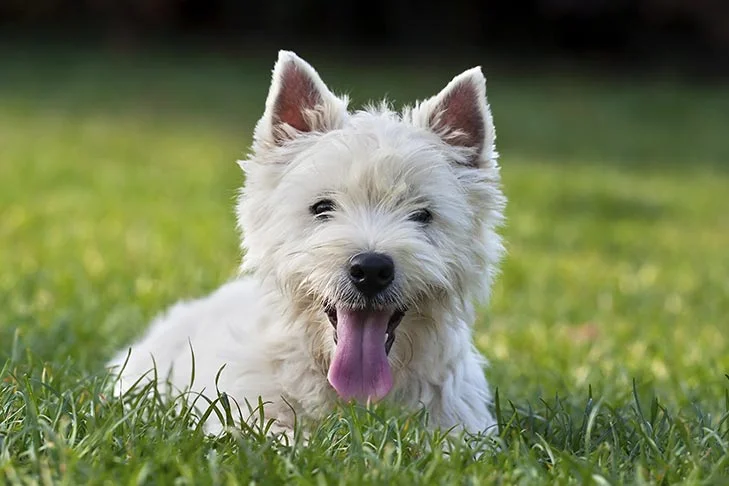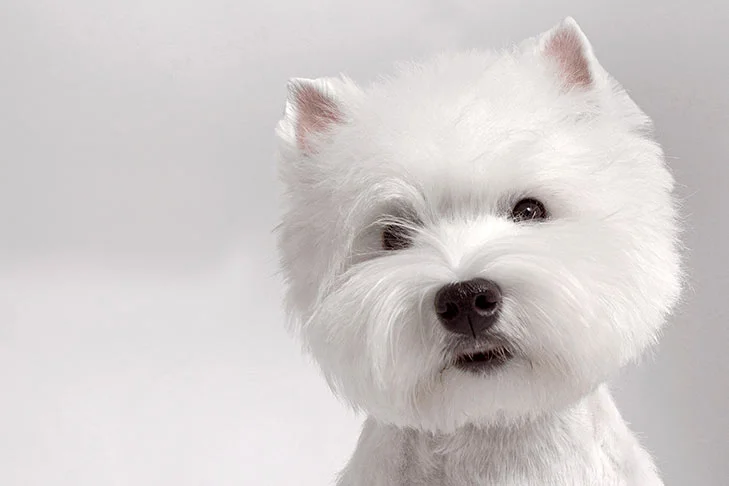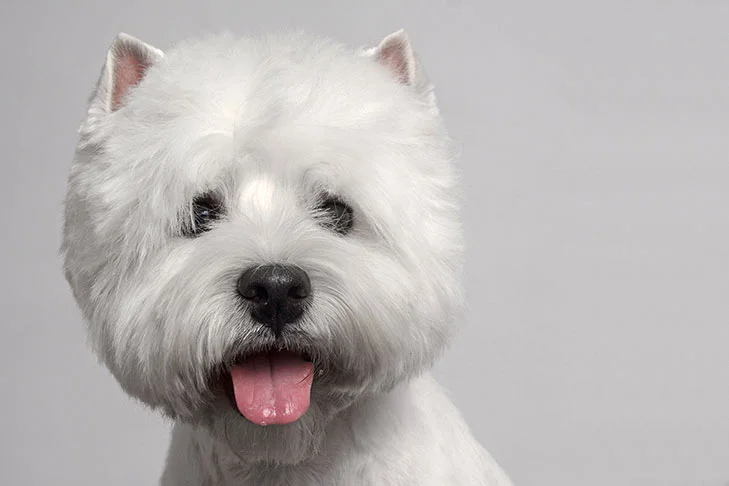The charming West Highland White Terrier (Westie, for short) has enchanted owners for over 300 years. It is intelligent, self-assured, and constantly amusing at play. This little but stout earth dog is one of the most well-known small terriers. The Westie has an enticing appearance, standing 10 to 11 inches tall at the shoulder with dark piercing eyes, a compact physique, and a carrot-shaped tail swinging with joy. But underneath the cuddly exterior lies a true working terrier with courage and gameness. Westies are surprisingly robust and resilient, having been bred to hunt rats and other underground animals. The double coat is completely white and is not fluffy or pleasant to the touch. Westies are alert and active, showing characteristics of a tenacious and independent rat terrier: They don’t need to be coddled, they chase after anything that moves, and teaching them can be difficult because of their independence. But with time and patience, Westies will train well due to their loyalty and sharp intelligence.
West Highland White Terrier
Average sizes and life
expectancy of the breed.
Height
11 inches (male)
10 inches (female)
Weight
15-20 pounds
Life Expectancy
13-15 years
Breed Traits & Characteristics
About the Breed

Owning a dog is not just a privilege; it’s a responsibility. They depend on us for, at minimum, food and shelter, and deserve much more. When you take a dog into your life, you need to understand the commitment that dog ownership entails.
 Health
Health
Recommended Health Tests From the National Breed Club:
- Patella Evaluation
- Hip Evaluation
- Ophthalmologist Evaluation
 Grooming
Grooming
 Exercise
Exercise
 Training
Training
 Nutrition
Nutrition
History
In the distant British Isles, disease-carrying rat infestations were a concern shared by the landed gentry, the nobility, and the impoverished farmers. The answer was the creation of a wide variety of terriers known as earth dogs, who were skilled at locating and eliminating rats.
The Westie, Cairn, Skye, Scottish, and Dandie Dinmont terriers, as well as other Scottish terriers, are believed to be all branches of the same family tree. In the poetic words of one historian, the actual origins of the Westie’s ancestors are “cloaked within the mists of the Scottish hills.” The Malcolm family started raising the tiny white pest controllers on their estate, known as Poltalloch, in the 1700s, giving rise to the breed we now know as the West Highland White Terrier. Before they made a debut in dog shows, they were bred and kept there for more than a century. King James I, who requested some “earth-doggies” from Argyleshire, is likely where the Malcolm dogs’ ancestry begins.
The Poltalloch Terrier was one of the breed’s various names, while the Roseneath Terrier was another, after a Scottish estate where early breedings were conducted.
By 1896, the West Highland White Terrier was the name by which the breed was recognized when it debuted at Scottish dog shows.






